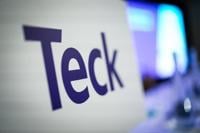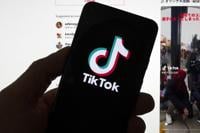TORONTO - When Amrita Maharaj-Dube goes shopping with her daughter, the five-year-old is instantly drawn toward all things pink and sparkly.
But when unicorns and hearts make an item more expensive than one with dinosaurs or space ships, her mother draws a line.
"I started buying more gender-neutral colours for my children," said Maharaj-Dube, who also has an eight-year-old son. "The black, the greys, the reds, orange and yellow — colours that are a bit more gender neutral (and) both my son and my daughter can use."
Products marketed toward women and girls such as razors, shampoo and even children's clothes can cost more than their equivalent for men or boys, a phenomenon that's been dubbed the "pink tax."
"Pink tax was a term coined in the '70s to describe the difference in pricing between men's and women's products," said Calgary-based Janine Rogan, a chartered professional accountant and author of the book, "The Pink Tax."
Disposable razors have been a representative example for years — the same product was priced higher when it came in pink.
Some of that discrepancy has improved in recent years. Along with companies adjusting their prices to become more equal, some jurisdictions around the world have eliminated actual taxes on necessary health products such as menstrual pads and tampons in a bid to level the playing field for those who use them.
However, corporations and marketers still find ways to raise prices for products aimed at women and girls such as shampoos and lotions, Rogan says.
Maharaj-Dube says her daughter is often disappointed with her money-saving choices, so she's turned to a solution that works for her bank account and keeps her child happy: thrifting.
"I take her to the thrift store and (tell her), 'Hey, you can pick out whatever you want,'" she said. "It's at a fraction of the prices (and) I'm getting good value for money."
Neighbourhood Facebook groups can also prove a helpful resource for swapping or buying young girls' hair clips, clothes or toys, said Maharaj-Dube, a corporate communications manager for a mental health and addiction treatment centre.
"We're all mothers and we're all feeling the pinch of these economic times," she said. "We're always trying to find ways to save money."
Maharaj-Dube's efforts to stretch a dollar on products targeted at her gender go beyond fulfilling her daughter's demands.
"I'll confess ... I'm in my late '30s and I (had started) investing more in skin care," she said. But she started noticing how expensive it can get if one adopts a 10-step skin care routine.
She resorted to do-it-yourself skin care, such as at-home turmeric or Greek yogurt face masks and aloe vera for her hair and skin instead of expensive facials.
"I've been changing my spending habits and not giving into the marketing powers of the skin care and beauty industry," she said.
Women often feel compelled to spend more on perfecting their physical appearance, but men don't typically face similar pressures. A man with greying hair is less likely to feel the need to dye it, for example.
Samantha Sykes, a senior investment adviser at Raymond James Ltd., said skin care products — targeted at women — tend to be priced higher than if they were aimed at men, such as men's facewash or face scrub.
"I tell people to go to a dermatologist for their skin care products as opposed to going to Sephora or Shoppers," Sykes said. "The dermatologists would have the same products and you can run stuff through benefits, and not necessarily pay that overcharge."
Other tips such as shopping from the men's section for razors or shampoo, or visiting a barber for a haircut if you have shorter hair, could help avoid the pink tax, she added.
Sykes said the pink tax follows women into their retirement years — when fixed incomes mean there is only so much money available.
"The pink tax is literally chipping away at their retirement savings because they're constantly being told they have to pay more for dry cleaning, for haircuts, for cosmetics, for toiletries and now, for (entertainment)," she said.
Many old-school financial advisers don't explain how the pink tax might affect older women into their retirement, Sykes said.
"I tell people: 'I'm not shaming you for liking the pink shirt and the pink tools and the pink shoes ... I'm just making sure that you are aware that you're being taken for a ride,'" she said.
"That's OK if you can afford it."
This report by ºÚÁϳԹÏÍø was first published March 7, 2024.








































